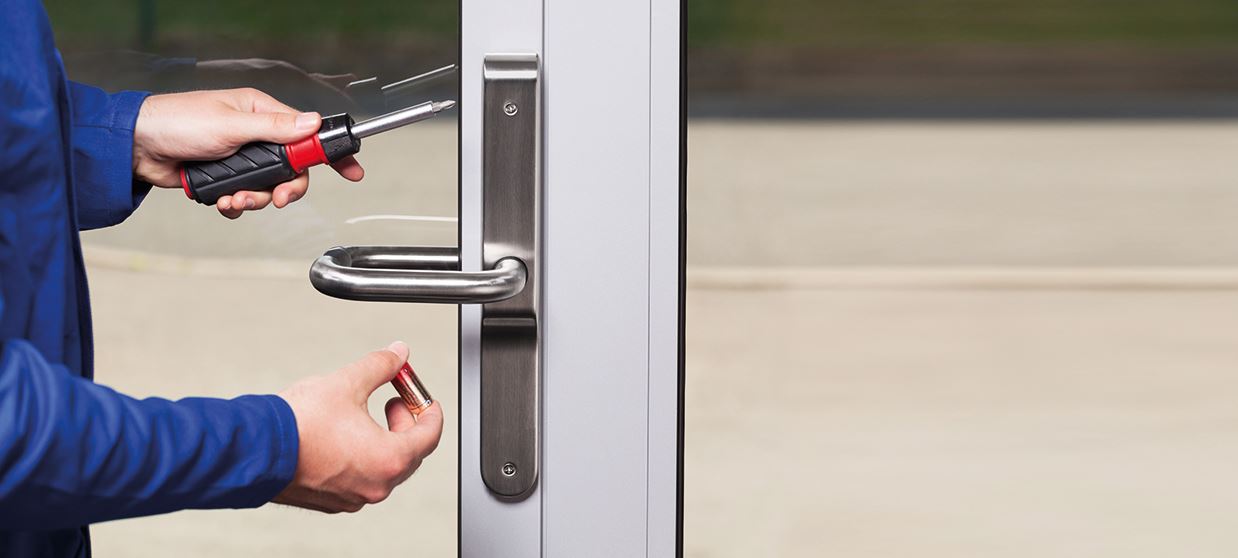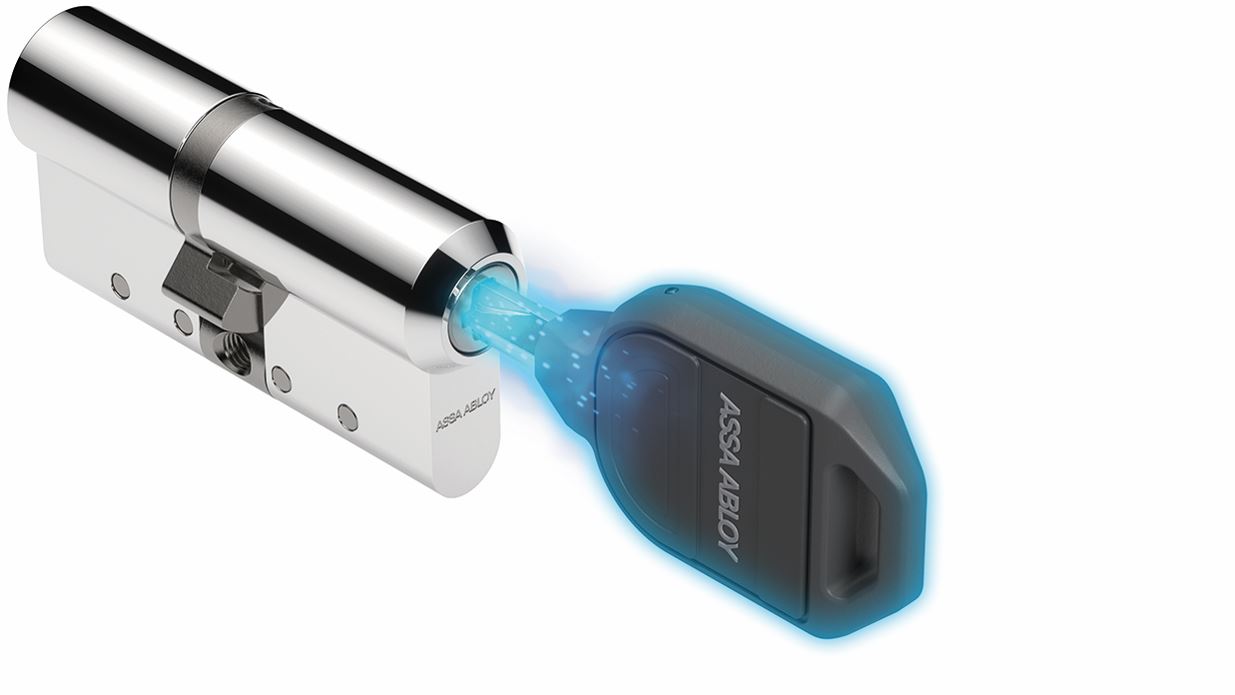
Access control systems are critical for healthcare environments, due to the pharmaceuticals, drugs, and medical supplies that are kept within them, and to ensure the safety of patients, staff, and visitors.
And, in recent years, like in most other sectors, the healthcare industry has increasingly been turning to wireless solutions. A key benefit is that wireless technology is easier to install, with no need to run wires throughout a premises, and with minimal impact on hospital operations, presenting specifiers with the option to retrofit. Aaron Ballard-Ridley, healthcare vertical specialist at Abloy UK, explains: “With a wired access control system, there is wiring to the doors and readers to install, which can be time intensive and disruptive to day-to-day operations. “Whereas, with a wireless solution, you just swap a cylinder, or a complete handle set on a door, to create access control with ease. “There are also now far more integrations with existing access control systems used currently in hospitals.”
A CONSTANT STRUGGLE
But further driving the switch to wireless is energy efficiency. Daniel May, director at Consort, told hdm: “There is a constant struggle to maintain a comfortable temperature within healthcare environments. “Often, open doors and windows can result in a loss of heat and wireless access control systems are designed to actively monitor, and restrict, access throughout the building, keeping doors and windows shut when not in use and reducing energy costs in the process.” Abloy UK estimates that organisations can save up to 90% on energy costs by switching from a wired to a wireless access control system. Wireless locks, in particular, offer huge energy-saving potential for healthcare buildings as they only work when presented with a credential. Ballard-Ridley said: “Most hospitals have traditionally-wired doors, with access control readers and a magnet at the top of the door that is holding the door shut. Those magnets are constantly drawing power to remain locked. “A wireless access control system does not use magnets, so you only need power momentarily when you present a card or fob to the handle to gain access. “And, to escape, you just push the handle down, so there is no power used to exit. “There is also extra installation required when fitting a wired solution, so a wireless system is more energy efficient in terms of installation, too.” Shaun Powell, healthcare sales manager at Abloy UK, adds: “During operation, wireless locks require just a battery change, approximately once every two years. “The installation phase is also more cost effective, with an estimated 82.5% saving on labour costs for a 100-door wireless installation versus wired installation. “And wireless locks provide more flexibility and can reduce costs when you reconfigure or expand a space.”
COUNTING THE COST
When specifying a solution, he said the first question to ask is what systems are currently being used. “This is because we have a range of wireless access control systems that can integrate with some of the major systems that are on the market,” he adds. “It’s a lot easier to add additional wireless doors onto a system – you don’t just have to add a new access control system, because there are far more integrations possible now, especially with our Aperio locking solutions. “We also have access control locks and electromechanical locks, such as CLIQ and Pulse, that are ideal for healthcare environments. “CLIQ is commonly used on hospital drug cabinets because it is so easy to retrofit into existing buildings – you just swap the cylinder to create an access control system. Plus, because it is an intelligent cylinder, the key supplies the power, but still complies with the Misuse of Drugs (safe custody) Regulations 1973.

BREAKING DOWN BARRIERS
“Previously, installation time of a wired solution may have been a barrier to upgrading, but now with a wireless solution it is easy. “Audit trails are a significant benefit, too, as key control with a traditional key system can be extremely challenging. “A digital access control solution gives much-tighter key security and helps access to be managed effectively across a hospital estate. “For example, you can remotely delete the access off a card, fob, or key to revoke access if required. “The CLIQ system also allows you to lockdown certain areas for security reasons, such as plant rooms and electrical cupboard risers located on the roof of a
building or in basements.” Looking to the future, manufacturers are evolving their wireless solutions further to meet the needs of healthcare organisations. Powell said: “Our Pulse system, for example, is a kinetic-energy digital key system, with all the flexibility of access control. “It is designed as an off-line system and supports the natural trend towards the reduction in required infrastructure for all public buildings. “And, whereas some electromechanical keys feature a battery, Pulse does not need any batteries – its kinetic energy is activated when you push the key in, the resistance gives the lock momentary power to allow access, making it the ultimate green solution.”

